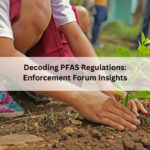What are Dangerous goods?
Any material which poses threat to human health and environment during packing, storage, and transportation. Examples of Dangerous goods used in daily life: Nail polish, deodorant, Lawn movers, crackers, all electronic products with batteries etc.
Classification of Dangerous goods:
All the dangerous goods are classified to below 9 classes and some of these 9 classes are again classified to Divisions:
- Class 1: Explosives: Products which detonate during chemical reaction, example: crackers
Divisions:- 1.1: Substances and articles which have a mass explosion hazard
- 1.2: Substances and articles which have a projection hazard but not a mass explosion hazard
- 1.3: Substances and articles which have a fire hazard and either a minor blast hazard or a minor projection hazard or both
- 1.4: Substances and articles which present no significant hazard; only a small hazard in the event of ignition during transport with any effects largely confined to the package
- 1.5: Very insensitive substances which have a mass explosion hazard
- 1.6: Extremely insensitive articles which do not have a mass explosion hazard
- Class 2: Gases: products in gaseous state which can be toxic and nontoxic (Fire extinguishers)
Divisions:- 2.1: Flammable gases
- 2.2: Non-flammable, non-toxic gases
- 2.3: Toxic gases
- Class 3: Flammable liquids: liquid, a mixture of liquids, or liquids containing solids that require a much lower temperature than others to ignite. Example: perfumery products, Nail polish remover.
Divisions: - Class 4: Flammable solids: are easily combustible and likely to contribute to fires during transportation. Example: Seed cake
Divisions:- 4.1 Flammable solids: These will burn easily than normal combustible materials. The burning of flammable solids is also fierce and rapid; they are also incredibly dangerous because they can decompose explosively, burn vigorously, or produce toxic gases
- 4.2 Spontaneously combustible: These can be either solids or liquids. They ignite spontaneously when in contact with oxygen
- 4.3 Dangerous when wet: These goods react with water to generate flammable gas that can be ignited by the heat of the reaction
- Class 5: Oxidizing agents & organic peroxides: are often extremely reactive because of their high oxygen content. Example: Hydrogen peroxide
Divisions:- 5.1 Oxidising Agents: are substances that can cause or contribute to combustion as a product of chemical reactions
- 5.2 Organic peroxides: are materials makes them extremely liable to ignition. They are unstable and can be explosive
- Class 6: Toxins and infectious substances: are substances like medical wastes
Divisions:- 6.1 Toxins: are liable to cause death because they’re, as the name suggests, toxic
- 6.2 Infectious substances: are micro-organisms that cause infectious diseases in humans or animals, otherwise known as pathogens
- Class 7: Radioactive material: are unstable atoms emitting harmful radiation. Example: Smoke detectors.
- Class 8: Corrosive: are highly reactive materials that produce positive chemical effects which corrode human, or material comes in contact with them. Example: Chlorides
- Class 9: Miscellaneous dangerous goods: covers substances that present a danger not covered in the other classes. Example: Lithium batteries, Air bags etc.
Finally, these dangerous goods are classified and identified by specific UN number (example: UN 1993: flammable liquid N.O.S) when transported by ROAD, RAIL, SEA and AIR and are subjected to multiple regulations.
Talk to one of our material compliance specialists at ComplianceXL to learn more about classification of your products, its substances, and applicable restrictions.






